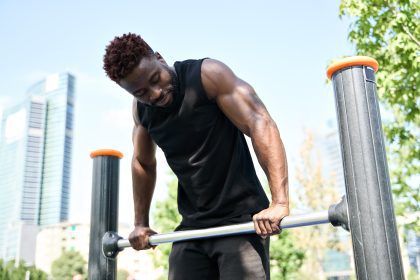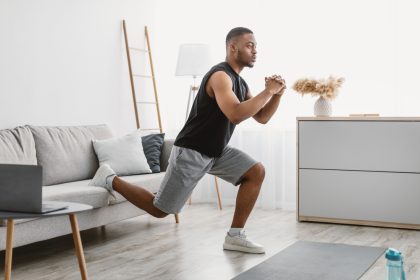When fitness coach Kate Rowe-Ham began experiencing debilitating anxiety, breathlessness, and joint pain in her early 40s, she initially dismissed these symptoms as the natural consequence of balancing motherhood with an intense fitness regime. However, her journey would lead to a revolutionary understanding of how exercise can be tailored to support women during perimenopause.
Breaking free from traditional fitness myths
After years of following a high-intensity workout routine, Rowe-Ham made a bold decision to restructure her fitness approach at age 44. The transformation involved reducing her HIIT classes from six weekly sessions to just one, marking the beginning of a more balanced and effective exercise strategy.
The science behind strength training
Declining estrogen levels during perimenopause can lead to significant muscle loss, making strength training particularly crucial during this life stage. Regular resistance exercises help maintain muscle mass, boost metabolism, and support bone density. This scientific understanding formed the foundation of Rowe-Ham’s new approach to fitness.
Walking, the underrated powerhouse
During the pandemic lockdowns, Rowe-Ham discovered an unexpected ally in her fitness journey – daily walks. This simple yet effective form of exercise proved transformative, offering both physical and mental health benefits. The science behind walking’s effectiveness lies in its ability to promote synovial fluid circulation and activate the parasympathetic nervous system.
Creating the perfect exercise balance
The combination of strength training and walking creates a synergistic effect that specifically addresses perimenopausal symptoms. This balanced approach helps regulate hormones, stabilize blood sugar levels, and maintain bone density while managing stress and anxiety.
Implementing the new routine
For women looking to follow this approach, Rowe-Ham recommends a structured yet flexible routine that includes 30-40 minutes of daily walking (approximately 4,000 steps) and three weekly strength training sessions. This combination provides optimal results while allowing for adequate recovery time.
Understanding strength training fundamentals
The key to effective strength training during perimenopause lies in proper programming. Rowe-Ham suggests dividing weekly sessions into upper body, lower body, and full-body workouts, each lasting 35-45 minutes. This approach ensures comprehensive muscle development while preventing overtraining.
The role of recovery
Recovery becomes increasingly important during perimenopause. Alternating between strength training days and walking days allows the body to adapt and rebuild, maximizing the benefits of both types of exercise while minimizing the risk of injury or exhaustion.
Adapting to hormonal changes
Understanding how hormonal fluctuations affect energy levels and recovery capacity is crucial. Rowe-Ham emphasizes the importance of listening to your body and adjusting workout intensity accordingly, making this approach sustainable long-term.
Mental health benefits
Beyond the physical advantages, this exercise combination offers significant mental health benefits. Regular walking promotes stress reduction and emotional balance, while strength training builds confidence and body awareness – particularly valuable during the psychological challenges of perimenopause.
Customizing the approach
The beauty of Rowe-Ham’s method lies in its adaptability to individual needs. While some women might find they can handle more intense strength training sessions, others might need to start with bodyweight exercises and gradually progress to weights. The key is maintaining consistency while respecting your body’s signals.
Nutrition’s role in the journey
While exercise forms the cornerstone of Rowe-Ham’s approach, she emphasizes that nutrition plays an equally important role during perimenopause. Proper protein intake becomes crucial for maintaining muscle mass, while adequate hydration supports joint health and overall well-being. The combination of appropriate nutrition and exercise creates a comprehensive approach to managing perimenopausal symptoms.
The importance of community
One often overlooked aspect of perimenopausal fitness is the power of community support. Rowe-Ham found that sharing her journey and connecting with other women experiencing similar challenges created a supportive environment that enhanced motivation and accountability. This social aspect can be particularly beneficial during times when symptoms feel overwhelming.
Tracking progress effectively
Monitoring progress during perimenopause requires a shift in perspective. Rather than focusing solely on traditional metrics like weight or measurements, Rowe-Ham suggests tracking energy levels, sleep quality, and mood improvements. This holistic approach to progress provides a more accurate picture of overall well-being.
Managing expectations
Understanding that perimenopause affects each woman differently helps manage expectations during this transition. Some might see quick improvements in symptoms, while others might require more time to notice changes. The key is maintaining consistency with the program while allowing for natural fluctuations in energy and capability.
Advanced strategies for symptom management
For women experiencing specific perimenopausal symptoms, Rowe-Ham offers targeted exercise modifications. These might include focusing on shorter, more frequent walking sessions during periods of intense hot flashes or incorporating more restorative movements on days when joint pain is more pronounced.
The role of rest and recovery
Quality sleep becomes increasingly important during perimenopause, and exercise can either help or hinder sleep patterns. Rowe-Ham recommends avoiding intense exercise close to bedtime and instead using evening walks or gentle stretching to promote better sleep quality. This attention to recovery ensures the body can fully benefit from the exercise program.
Through strategic exercise modification and a deeper understanding of perimenopausal needs, women can maintain their health and vitality during this significant life transition. Rowe-Ham’s experience serves as a blueprint for others seeking to navigate perimenopause with confidence and strength, demonstrating that with the right approach, this life phase can be an opportunity for growth and renewed vitality.
The future of perimenopausal fitness continues to evolve as more women share their experiences and success stories. By following evidence-based approaches like Rowe-Ham’s program, women can not only manage their symptoms but thrive during this transitional period, setting themselves up for long-term health and wellness in their post-menopausal years.












